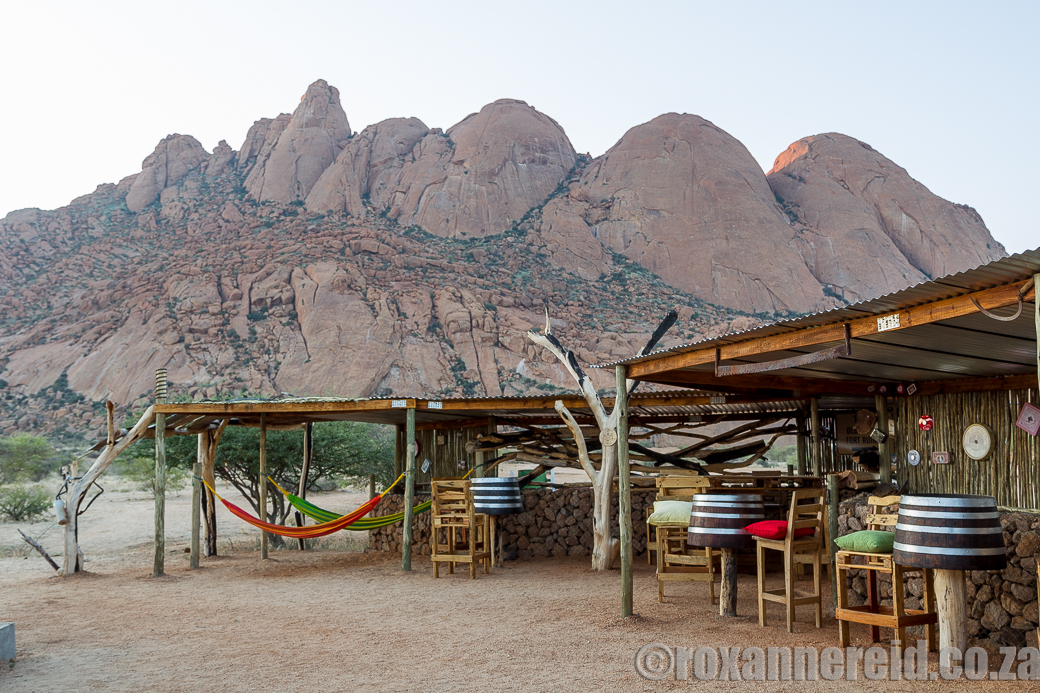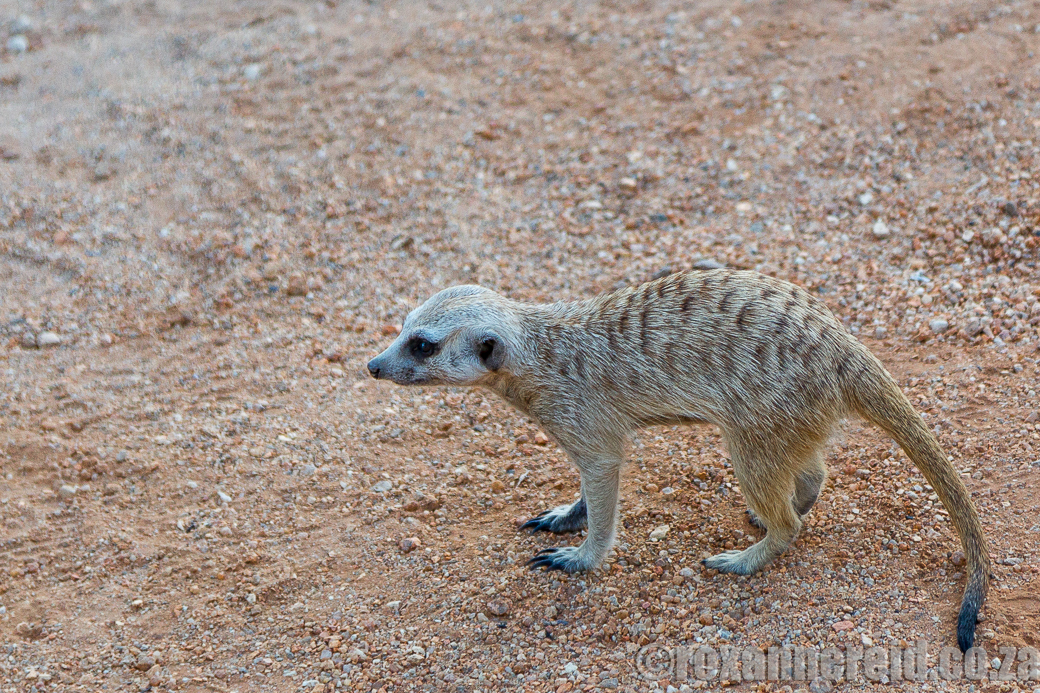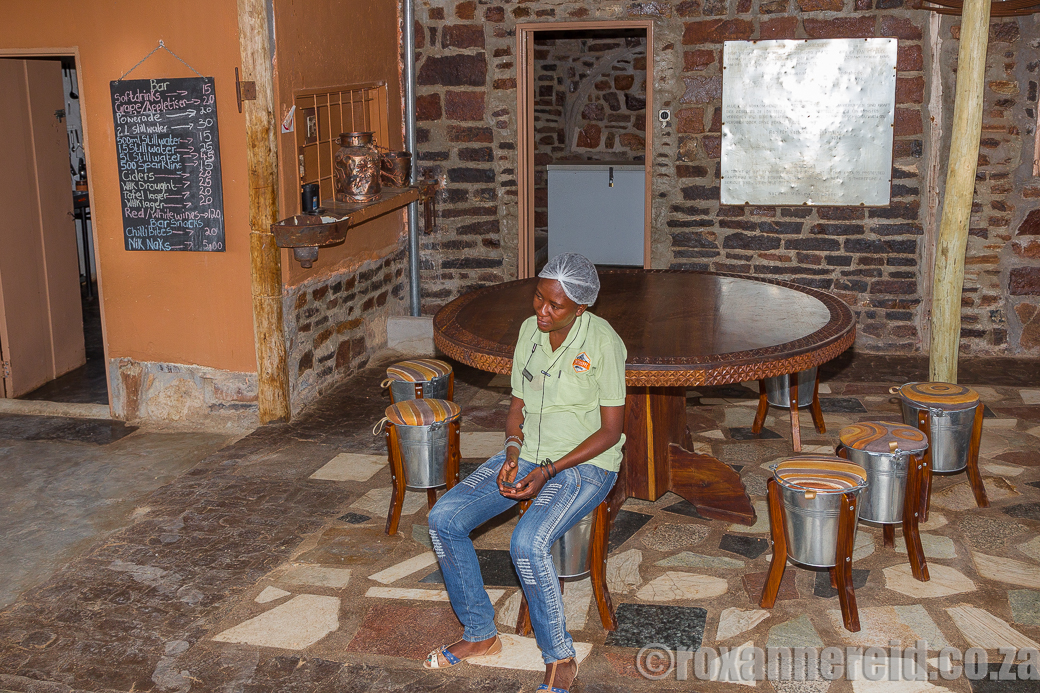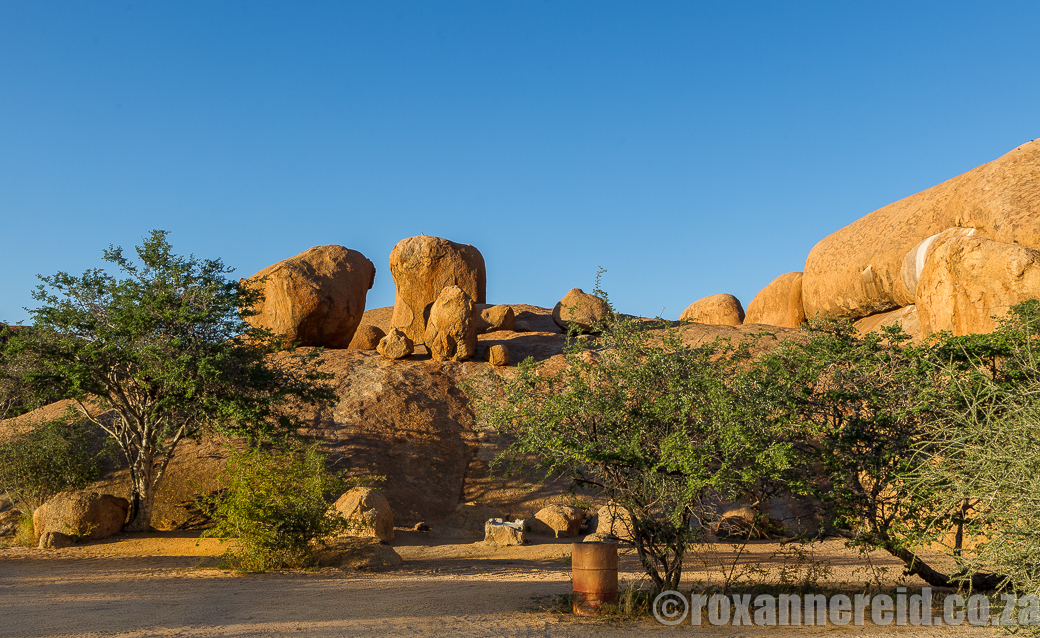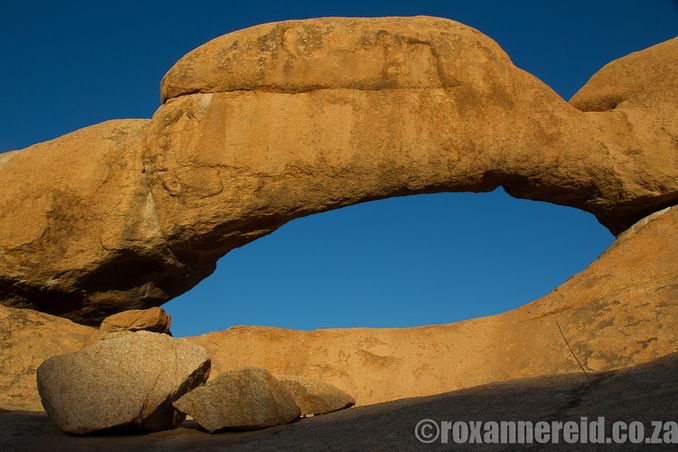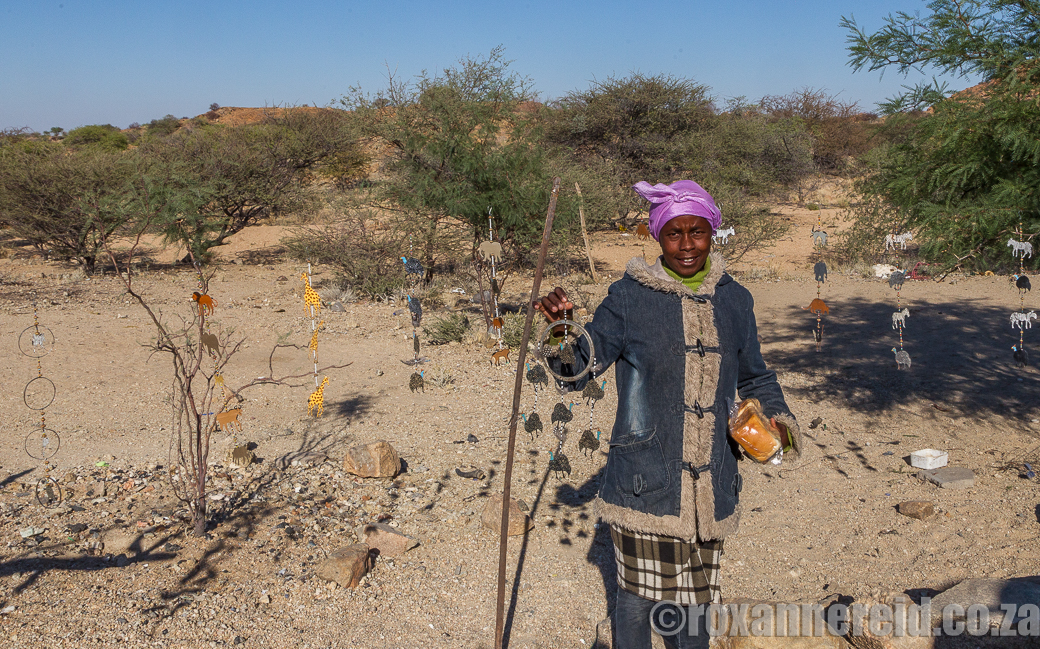
By Roxanne Reid
If you’re a rock hopper, star gazer or even a serious climber and you’re travelling the road between Usakos and Swakopmund you’ll never forgive yourself if you don’t stop for a few days at Spitzkoppe campsite in the Namib Desert.
If you’re a rock hopper, star gazer or even a serious climber and you’re travelling the road between Usakos and Swakopmund you’ll never forgive yourself if you don’t stop for a few days at Spitzkoppe campsite in the Namib Desert.
Here on Open Africa’s Arid Eden Route, you’ll find bald granite peaks popping up theatrically out of the surrounding flat plains. Gross Spitzkoppe is the highest at about 600m above the desert floor, or 1728m above sea level. There’s a riot of giant boulders and secret caves, somewhere you can camp in peace or knock yourself out with a festival of hiking or climbing.
We arrived at the Spitzkoppe Community Campsite late, so there was no time to explore before dark. Once we’d settled ourselves we went for a drink at the engaging little bar-cum-restaurant. There was something of a ‘shebeen’ theme, with bar stools made of upturned zinc buckets with cushions on top. The thatched lapa also had benches with bright cushions of red, yellow and green, and a hammock or two for anyone who wanted to be extra-chilled.
Our chicken burger – a piece of chicken inside a freshly made but rather dense roosterkoek (bread dough cooked on a grid over the coals) – was served without trimmings on an enamel plate. We ate to the accompaniment of the chirruping of two habituated meerkats but refused to feed them, believing they should be off catching scorpions and beetles, not begging for burgers.
We watched the play of light on the rocks behind the bar as the sun set. Since this was a community camp we tried to chat to the staff, but they were very reserved and hard to draw. We tried Afrikaans, hoping they’d feel more at ease, but it made no difference. We choose to stay at community camps for three reasons: to support their tourism efforts, to bring income into deeply rural areas, and to interact with the locals, swop stories and hear about their experiences. So our inability to engage them here was disappointing.
Campsites and stars
The campsites are set far apart among the boulders, each with its own dry loo but the only showers and flush toilets are near reception. After a long day of heat and dust, I enjoyed my shower with a gecko and then watched as the stars came out to play, shimmering brightly in the dry winter air. The Southern Cross, Venus, Mars, Jupiter and Saturn, we could spot them all, although our binos didn’t really cut it as telescopes for detail.
The campsites are set far apart among the boulders, each with its own dry loo but the only showers and flush toilets are near reception. After a long day of heat and dust, I enjoyed my shower with a gecko and then watched as the stars came out to play, shimmering brightly in the dry winter air. The Southern Cross, Venus, Mars, Jupiter and Saturn, we could spot them all, although our binos didn’t really cut it as telescopes for detail.
We woke fresh the next morning to the sound of cocks crowing and people calling and laughing. We went for a drive to see the Pontok mountains, Great and Little Spitzkoppe and the Sugarloaf, with short walks to see the rock arch and rock pool. There were lots of other intriguing boulders too, like two rounded rocks with a smaller one suspended between them, nothing but fresh air beneath it.
We realised we’d made a mistake – we should have booked at least two nights so we’d have had more time to explore.
We realised we’d made a mistake – we should have booked at least two nights so we’d have had more time to explore.
Other things to do
Apart from camping, star-gazing and enjoying a drink at the bar/restaurant, this is really a place to explore on foot.
1. If terms like open book rail right and mantelshelf, bolted stance, quickdraws and endurance face climbing make you feel a thrill of excitement, you’ll want to climb the Gross Spitzkoppe, also known as the Matterhorn of Namibia. The western face was first climbed in 1946 and is still popular. Here the climbs have evocative names like ‘Active Side of Infinity’, ‘Beyond Suntan Lotion’ and ‘Nothing in Moderation’ but if you want to know more, you’ll have to speak to the campsite manager or one of the (compulsory) guides because this is definitely not my area of expertise.
Apart from camping, star-gazing and enjoying a drink at the bar/restaurant, this is really a place to explore on foot.
1. If terms like open book rail right and mantelshelf, bolted stance, quickdraws and endurance face climbing make you feel a thrill of excitement, you’ll want to climb the Gross Spitzkoppe, also known as the Matterhorn of Namibia. The western face was first climbed in 1946 and is still popular. Here the climbs have evocative names like ‘Active Side of Infinity’, ‘Beyond Suntan Lotion’ and ‘Nothing in Moderation’ but if you want to know more, you’ll have to speak to the campsite manager or one of the (compulsory) guides because this is definitely not my area of expertise.
2. Take a hike to a lookout point on top of the Spitzkoppe or brave the chain ladder. You must take a guide with you on any hike.
3. If you’re interested in rock art talk to your guide about a hike that will take you to see some of nearly 40 known sites in the area. Some are up to 4000 years old. Again, you may not visit rock art sites without a guide.
4. If you love birding, look out for species like martial eagle, African hawk-eagle, Ludwig’s bustard, Burchell’s courser, Herero chat, Namaqua sandgrouse and yellow-bellied eremomela.
5. Whatever you do, try not to miss the sunrise and sunset, when the rocks and boulders are at their radiant best.
3. If you’re interested in rock art talk to your guide about a hike that will take you to see some of nearly 40 known sites in the area. Some are up to 4000 years old. Again, you may not visit rock art sites without a guide.
4. If you love birding, look out for species like martial eagle, African hawk-eagle, Ludwig’s bustard, Burchell’s courser, Herero chat, Namaqua sandgrouse and yellow-bellied eremomela.
5. Whatever you do, try not to miss the sunrise and sunset, when the rocks and boulders are at their radiant best.
Need to know
1. If you’re not equipped for camping, you can stay in a rustic thatched room. They’re simple but adequate.
1. If you’re not equipped for camping, you can stay in a rustic thatched room. They’re simple but adequate.
2. How to get there: take the B2 from Swakopmund towards Usakos. 40km before Usakos turn left onto the D1918 towards Henties Bay. After 18km turn right on to the D3716 and drive a further 11km. You don’t need a 4x4 to get to the campsite.
GPS co-ordinates S21.83977 E15.20162.
More about Namibia
Copyright © Roxanne Reid - No words or photographs on this site may be used without permission from roxannereid.co.za
GPS co-ordinates S21.83977 E15.20162.
More about Namibia
Copyright © Roxanne Reid - No words or photographs on this site may be used without permission from roxannereid.co.za

